Log in or create new account to save this product to your wishlist.
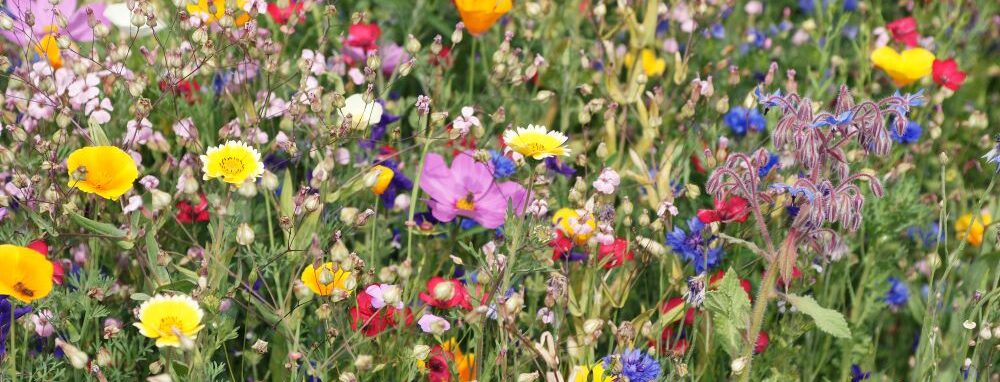
When and How to Sow Wildflower Seeds in your Garden
Wildflowers grow naturally in the wild but can also thrive in your garden. Find out which to choose, when to sow them, and how to take care of them.
🌱 All important maintenance moments for your lawn during the year. Leave your email and we will send you the lawn calendar for free.
Enter your email
Receive the lawn calendar in the mail
Enjoy a green lawn all year round!

- Order by 2PM = shipped today
- 250.000+ satisfied customers!
- 60 day satisfaction guarantee
Imagine strolling through a vibrant, colourful meadow, rich with the intoxicating scent of various wildflowers. Now, imagine this meadow in your garden. Maybe it’s time to start sowing wildflower seeds.
- Introducing Wildflowers
- Ideal Conditions for Wildflowers
- Choosing the Right Type of Meadow
- The Process of Sowing Wildflower Seeds
- Maintaining Your Wildflower Garden
- Our favourite wildflowers
- FAQs
Growing a wildflower garden is not only aesthetically pleasing, but it also promotes biodiversity by providing a haven for local insects and wildlife.
This article will guide you through the process of sowing wildflower seeds, providing a step-by-step guide to creating your very own wildflower haven.
Ready? Let’s get growing!
Introducing Wildflowers
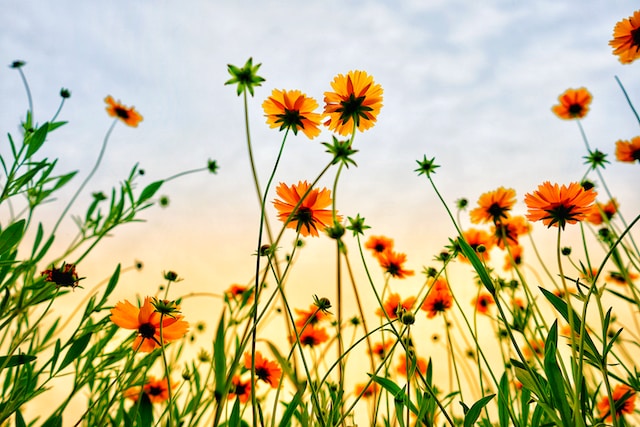
Wildflowers are a crucial part of our ecosystem, known for attracting a diverse range of insects and animals. In turn, this helps create a miniature ecosystem that promotes your garden’s biodiversity.
But, of course, wildflowers make an attractive, diverse, and colourful addition to any garden.
You can introduce wildflowers to your outdoor space in various ways:
- Entire lawns: Transform your entire lawn into a wildflower meadow.
- Garden sections: Dedicate a section of your garden to wildflowers.
- Raised beds: Create raised beds filled with wildflowers.
- Plant pots: Grow wildflowers in plant pots for a portable display.
- Window boxes: Brighten up your windows with colourful wildflowers.
- Allotments: Enhance your allotment with the addition of wildflowers.
Additionally, you can collaborate with local communities, schools, or councils to introduce wildflowers into community green spaces, playing fields, and parks.
Ideal Conditions for Wildflowers
Wildflowers thrive best in open, sunny areas with low-quality soil. Therefore, avoid using compost or fertiliser when preparing your wildflower garden.
If your soil is rich, consider removing the top 3-6 inches of topsoil to create the ideal conditions for growing wildflowers.
Choosing the Right Type of Meadow
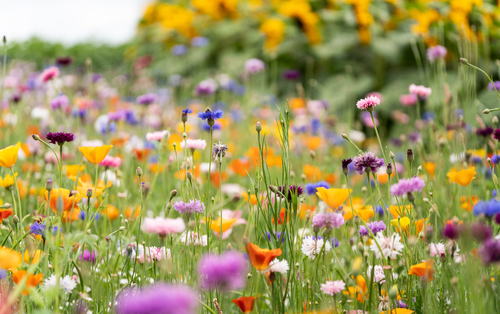
There are two primary types of meadow – annual meadows and perennial meadows. Both can be cultivated using mixed wildflower seeds or wildflower plug plants.
Annual Meadows
Annual wildflowers bloom in their first season, providing a bright display of colour from early summer. Then, the blooms die back, producing seed that self-scatter in late summer or autumn.
These wildflowers, such as cornflowers, poppies, and corncockle, can be scattered in beds and borders for an eye-catching display.
Perennial Meadows
Perennial meadows more closely resemble those found naturally in the British countryside. They consist of grasses and flowers, which thrive on poor soils, which prevents domestic grass from outcompeting the wildflowers.
These meadows take several years to establish and flower. You can find perennial wildflowers such as oxeye daisies, ragged robin, and red campion in open areas or woodland.
The Process of Sowing Wildflower Seeds
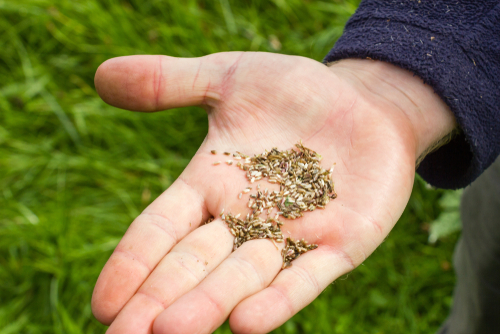
Now that we’ve covered the basics, let’s delve into the process of sowing wildflower seeds.
This process involves preparing the ground, sowing the seeds, and then caring for your wildflower garden.
When to Sow Wildflower Seeds
The prime window for sowing wildflower seeds is between March and April, or September if your soil is light and well-drained — poppies and cornflowers prefer autumnal sowing.
Always read the packet instructions for specific sowing times.
Select your Ideal Location
Pick your ideal spot — most wildflowers favour direct sun. However choose woodland flowers for shady areas, like bluebells, wild campion, common vetch, musk mallow, or meadow cranesbill.
Preparing the Ground
Start by clearing away existing plants and grass. Removing vigorous perennial weeds such as stinging nettles, docks, and couch grass is particularly important.
After clearing the area, dig over the soil until it’s fine and crumbly, then rake it to create a level seed bed.
Leaving the site unsown for a couple of weeks is a good idea. That way, any weeds that remain in the ground will appear. Then, remove them before sowing your wildflower seeds.
Sowing the Seeds
Typically, 1 gram of pure wildflower garden seeds is ample for 1 square metre of soil.
If mixing wildflower seeds with grass, sow at 5g per square metre.
Mix your wildflower seeds with silver sand to ensure even distribution, and sprinkle the mix by hand.
Then, lightly rake the area and cover it with netting to protect it from birds and cats.
Aftercare
Keep the soil moist in hot, dry periods. This will aid successful germination.
Water annual wildflowers while they are establishing to encourage good growth. However, you should leave perennial wildflower meadows to grow naturally without additional water or fertiliser.
Maintaining Your Wildflower Garden
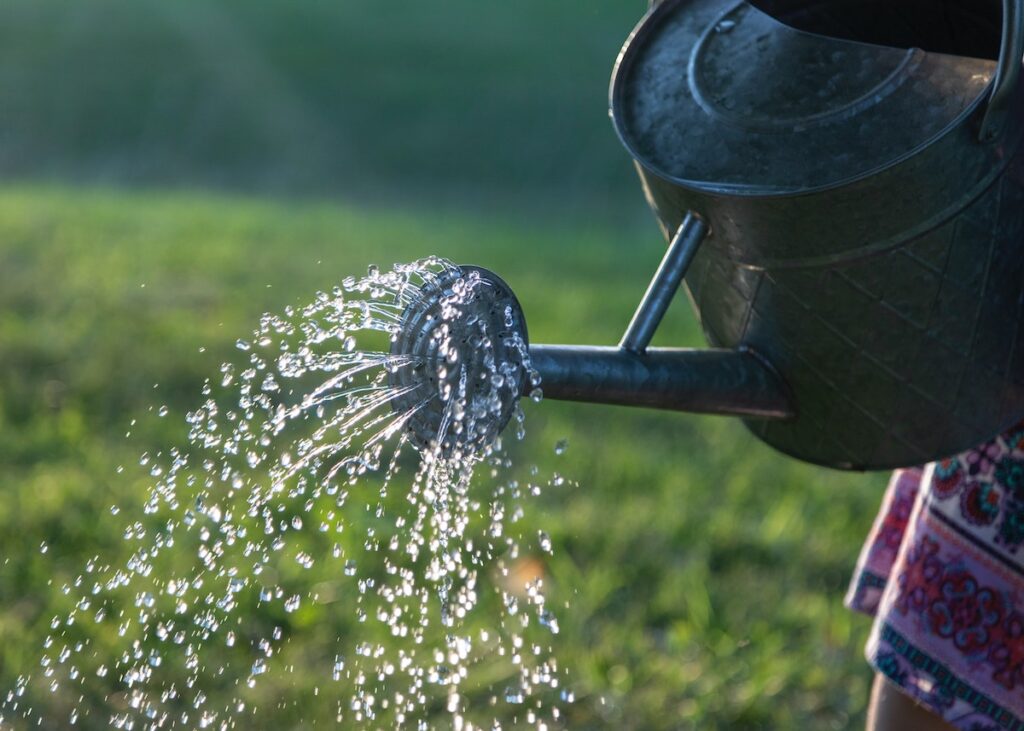
Your wildflower garden will require some maintenance. This includes controlling weeds, deadheading flowers to encourage blooms and end-of-season care.
Controlling Weeds
Weeds can be a problem in the early stages of growth. Persistent weeds like thistles and dock are best rooted out by hand or spot-treated with a glyphosate-based weed killer.
However, we consider chemical weed killers a last resort.
Deadheading Flowers
Deadheading, or cutting back spent flower blooms, helps keep your plants looking fresh and healthy and encourages them to produce more blooms.
End-of-Season Care
At the end of the season, mow your wildflower meadow or cut them down to the ground.
You can mow once a year, preferably late in the autumn, after all your flowers have ripened and dropped their seeds. This helps maintain your wildflower meadow.
Our favourite wildflowers
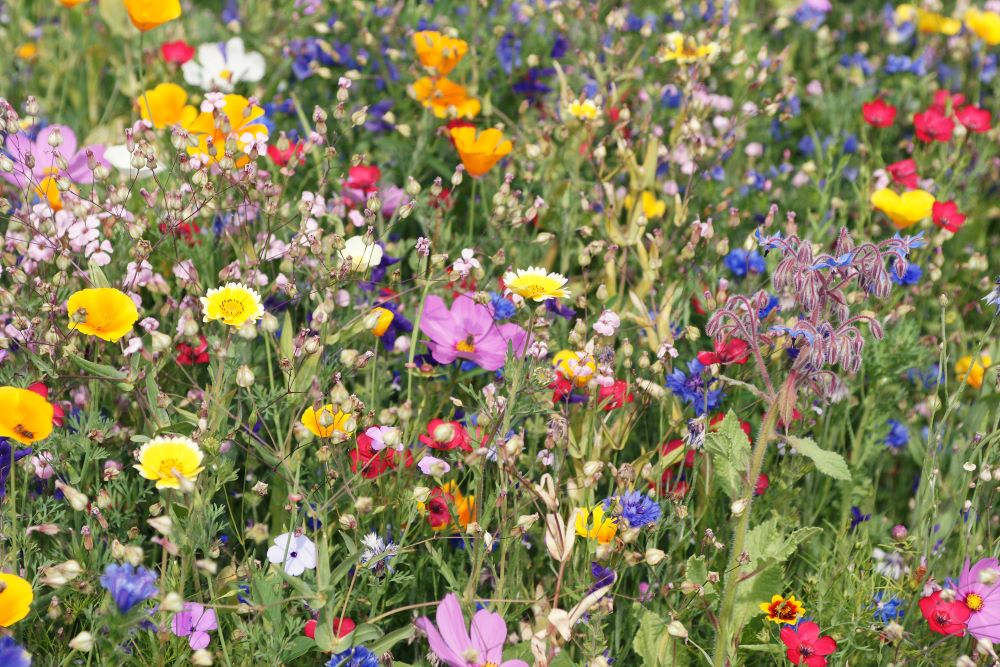
There are hundreds of British wildflower varieties, but these are our favourites:
- Cowslip
- Foxglove
- Honeysuckle
- Cornflower
- Field scabious
- Fritillary
- Anemone nemorosa
- Catsear
- Dog rose
- Oxeye daisy
- Common knapweed
- Bee orchid
- Dog violet
- Primula vulgaris
- Corncockle
FAQs
The best months to sow wildflowers are March and April. However, if your soil is light and well-drained, you can sow some wildflowers, such as poppies and cornflowers, in the autumn.
Most wildflowers grow best in direct sun, which also attracts pollinating insects. If your garden has shaded regions, select woodland wildflowers, like bluebells, oxeye daisies, ragged robins, and red campions.
No, you don’t necessarily have to sow wildflowers every year. Many wildflower species are perennials or self-seeding annuals, meaning they either come back each year from the same roots or they naturally drop seeds that will grow in subsequent seasons, creating a self-sustaining display of colour and biodiversity.
Any questions?
We hope this guide has equipped you with the knowledge to choose and sow your wildflowers confidently. But if you have any further questions, please contact us.
Read on for more tips on the best wildflowers to grow in your garden!
Additionally, use our extensive Help & Advice section, brimming with expert tips on a wide range of gardening and lawn care practices.
Happy gardening!
-
How to Grow Eucalyptus in British GardensWith a little love and care, eucalyptus trees can thrive in English gardens. Since they don’t germinate well without proper help, there are not considered invasive. So, there is no reason not to plant them if you enjoy their looks.Read more
-
Transform Your Garden with All-Year-Round Flowering PlantsDid you know you can enjoy blooming flowers even in January? With the right selection of all year round plants, there’s no need to wait until spring to add some colour to your garden.Read more
-
How to Create a Butterfly Garden: A Simple Guide for British GardensThe UK's butterfly population includes 59 different species. These beautiful winged creatures face a steady decline because of habitat loss, pollution and changing weather patterns. Your garden can become a vital link between nature reserves and natural habitats. Let’s explore how.Read more
-
Volcanic Rock Dust for Your Garden—Application and TipsDid you know that volcanic rock dust is a brilliant organic soil improver? This article explains exactly what it's good for and how to use it properly.Read more
-
How to Use Landscape Fabric ProperlyIf weeds or erosion in your garden are troubling you, landscape fabric might be the solution. We’ll explain how and when to use it properly, just keep on reading.Read more
-
Hostas: A Complete Care GuideIf you have a north-facing garden or some shady corners on your property, hostas are the plants for you. These green delights thrive particularly well in partial to full shade and require consistently moist soil to perform at their best.Read more
-
How to Grow Grapes in Your Garden: A Simple Step-by-Step GuideGrapevines produce some tasty fruits, but often they are simply grown for their gorgeous leaves. Whatever your motivation may be, we have a guide on how to grow grapes for you.Read more
-
Worm Composting Made Simple: From Kitchen Scraps to Garden GoldDid you know that a single pound of composting worms can devour half their body weight in waste every day? That's roughly twelve pounds of kitchen scraps transformed into garden gold each month! We will look at how to make this happen.Read more
Leave a comment
Your answer will be displayed on the site and the interested party will be notified by email.
Leave a comment
Have a question or want to share your experience? Leave us a comment.

- Order by 2PM = shipped today
- 250.000+ satisfied customers!
- 60 day satisfaction guarantee

- Order by 2PM = shipped today
- 250.000+ satisfied customers!
- 60 day satisfaction guarantee

- Order by 2PM = shipped today
- 250.000+ satisfied customers!
- 60 day satisfaction guarantee

🌱 All important maintenance moments for your lawn during the year. Leave your email and we will send you the lawn calendar for free.
Enter your email
Receive the lawn calendar in the mail
Enjoy a green lawn all year round!












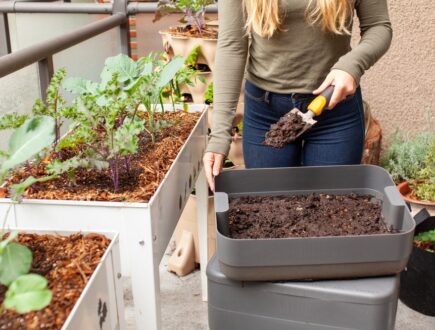



 Summer Deal! Get 15% off the
Summer Deal! Get 15% off the 




Comments (0)
There are no comments yet. Well then, what are you waiting for to
Be the first to write your comment!inaugurate this pretty page?
Do you have some comments?